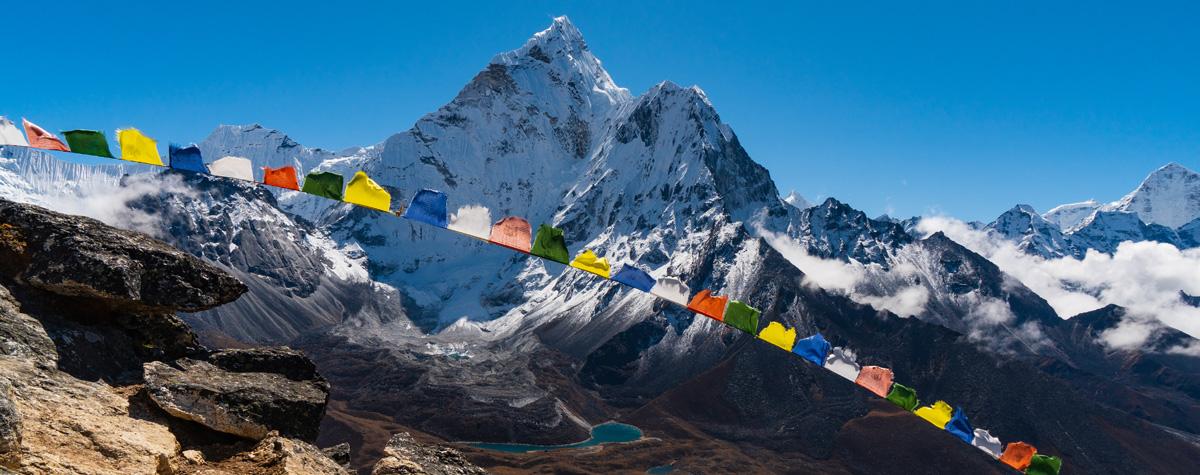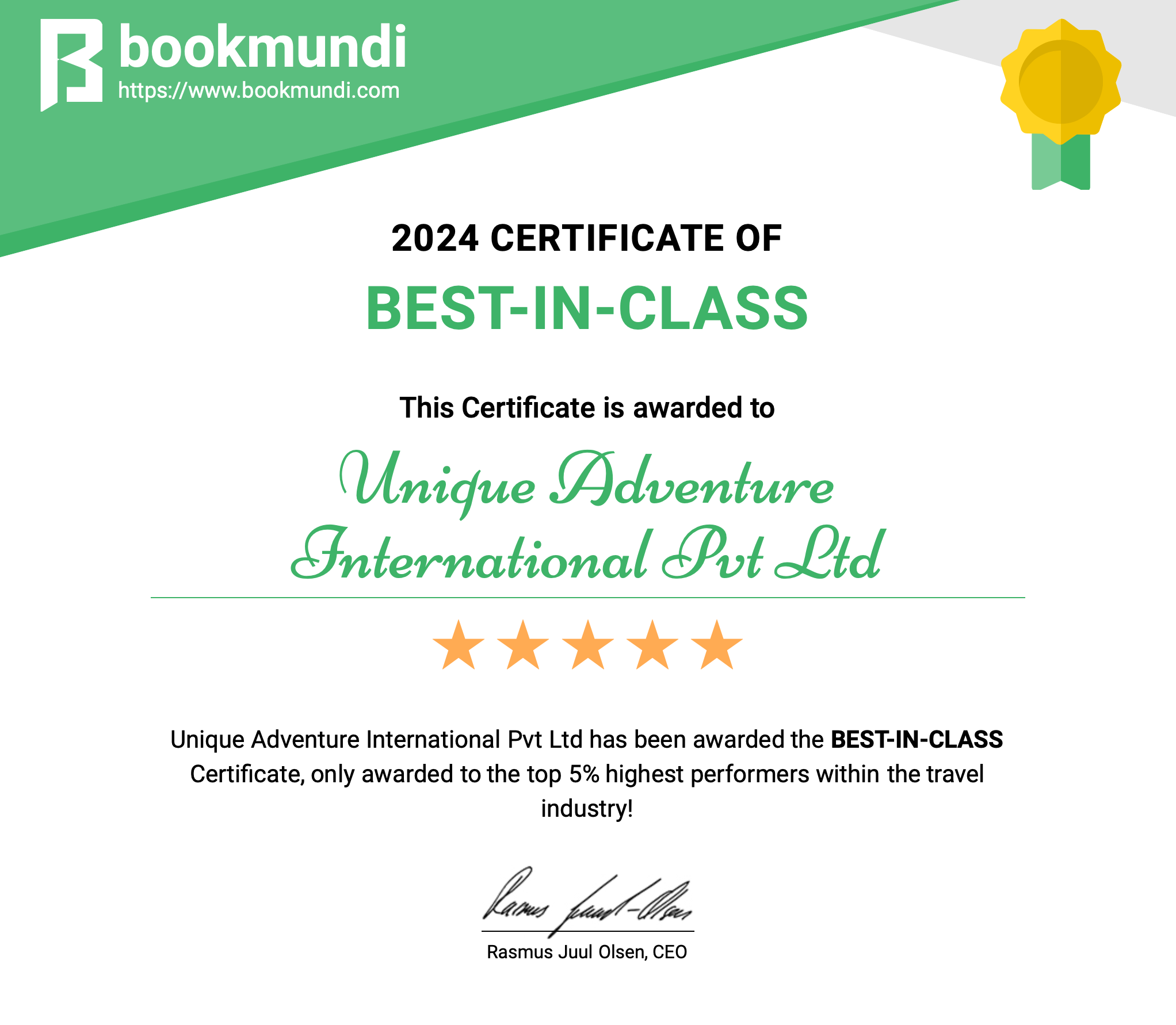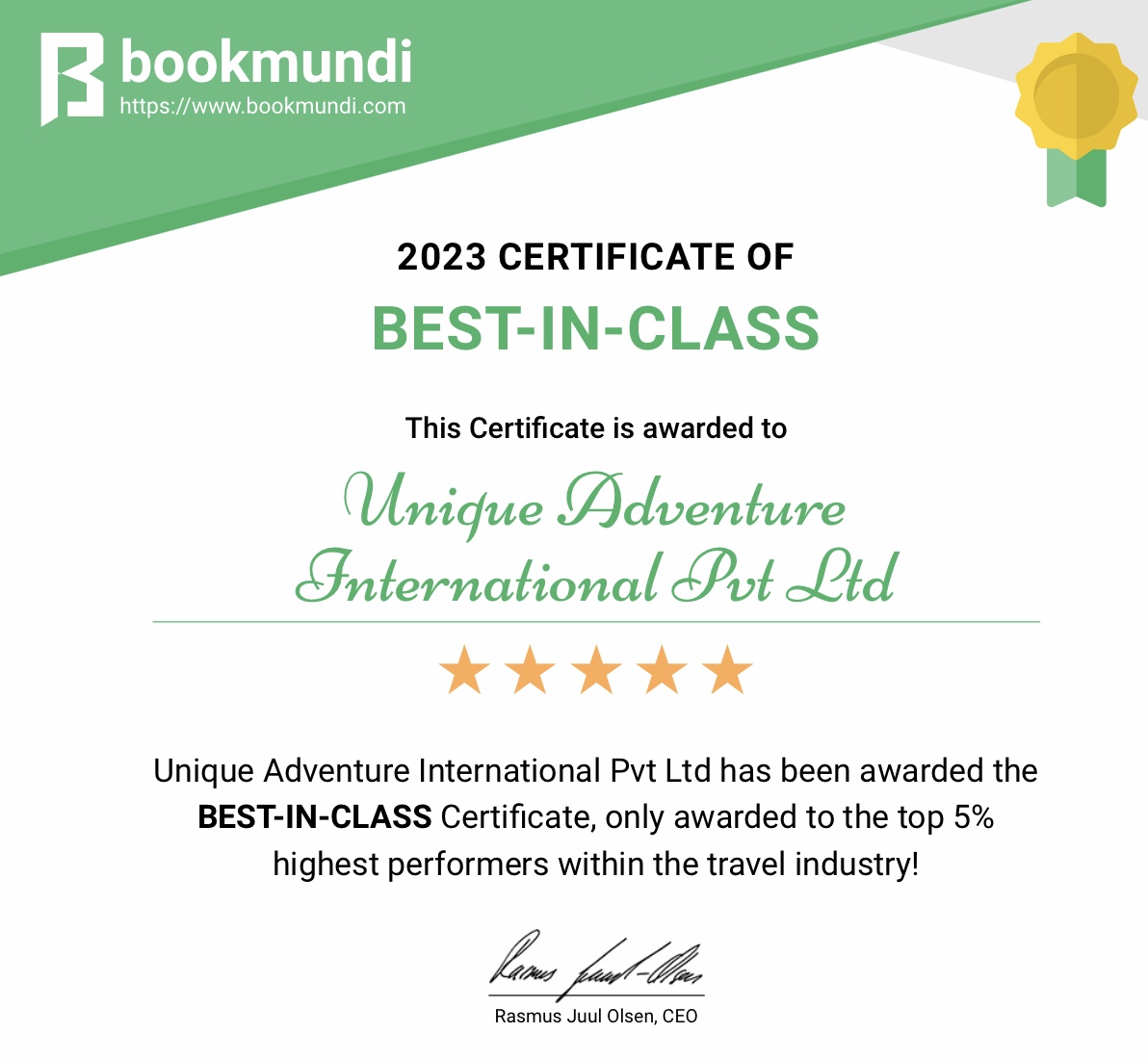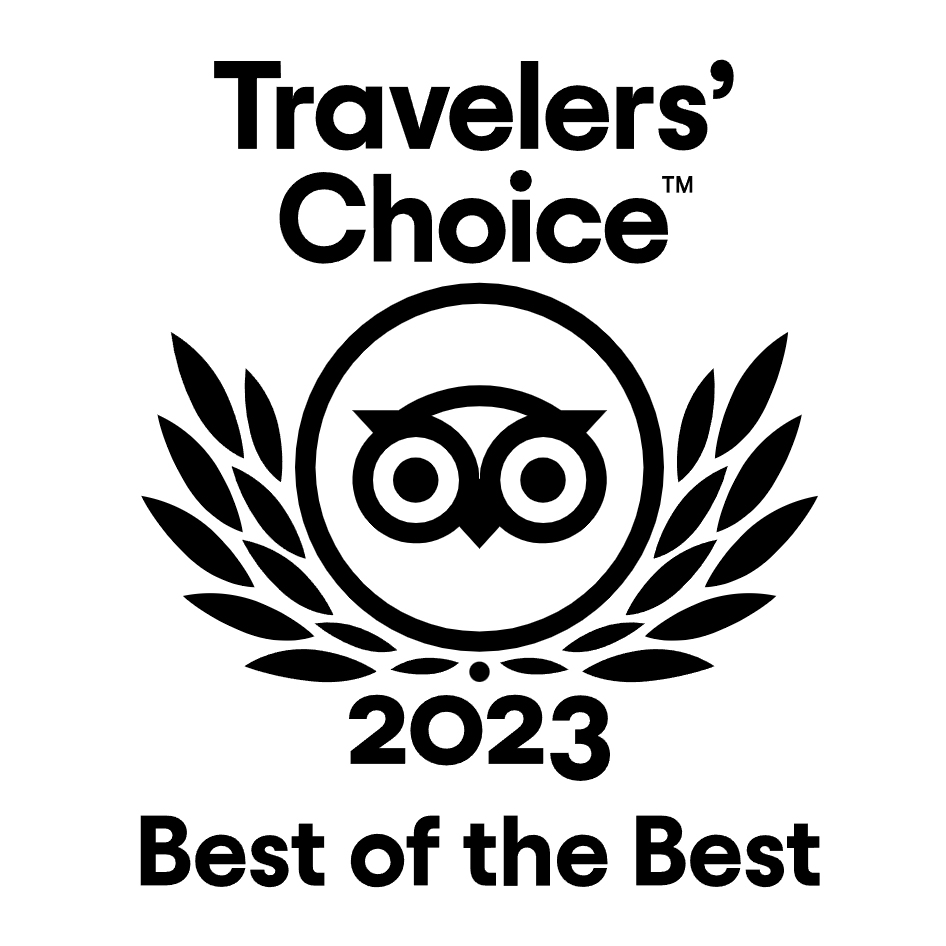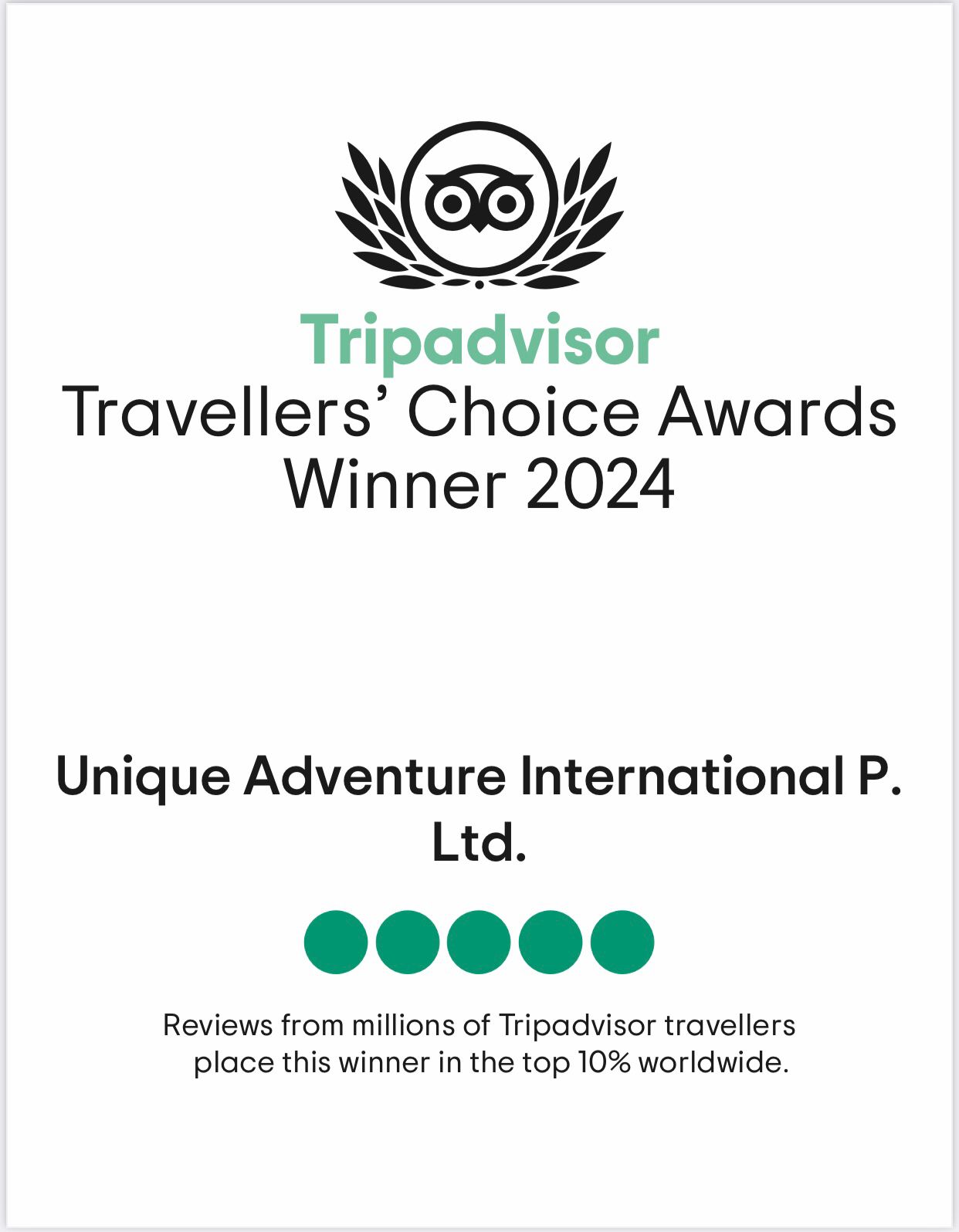Everest Three High Passes Trek
This trek covers the three high passes of the Khumbu Everest Region, connecting the valleys of Thame, Gokyo, and Imja with the Everest base camp. Explore the Everest high pass trek in 2024 and 2025 at the lowest cost.
Overview
The Everest Three High Passes Trek route begins with the mountain flight to Lukla from Kathmandu. The perspectives of towns, sloping territories, timberlands, and the nearby mountain perspectives would give you the things to come in addition to trekking in the Everest locale.
The simple trek from Lukla to Phakding would be the warm-up strolling on the trail. When you have reached Namche Bazaar, bonafide Sherpa culture begins to get into you. Namche Bazaar is a thriving marketplace of the entire Khumbu region. The acclimatization climbing to the world's most astounding found in The Everest View Hotel gives shocking all-encompassing perspectives of the mountains and encompassing slopes of the area.
Khumbu region of Nepal trekking is the encapsulation of the enterprise and divinity of all the adrenaline surge exercises that could ever happen in Nepal under the walking holiday category. Everest region’s three high-altitude passes along with the Everest Base Camp and Kalapathar will test a great deal of traveler’s physical endurance testament. Kongma La Pass, Renjo La Pass, and Chola Pass – these passes together form an excellent trekking package having fun, excitement, adventure, challenge, and intrepidity.
The feature of Everest 3 High Pass Trek is the opportunity to witness the Everest Base Camp and Kalapathar too. Unique Adventure International offers this stunning adventure to the Himalayas served to you with the help of master trekking guides with perfect accommodations.
When you have acclimatized the next day, the trek to Tengboche, the perfect place of the Khumbu, arrives with just about 4 hours of walking. The serenades of supplications and possess a scent reminiscent of the incense would give the otherworldly coaxing to you. The following day's trek would be towards Dingboche (the valley overlooking beautiful Mt. Amadablam) then the primary pass can be crossed the Kongma La Pass. The three high pass trek adventure follows a rough territory and the watchful strolling in the trail ought to be improved, prompted by our trekking pioneers. From Kongma La Pass the outing to Gorak Shep would be a stunning feeling as the trekkers would expect the Everest Base Camp in the region.
The short climb towards EBC takes you to the great place in the foothills of the tallest snow-covered heap of the world Mt. Everest. The following day's outing to Kalapathar for the grand dawn see in the mountains stirs the soul of enterprise in your brain. When you have appreciated the dawn, see the trek taken after towards Chola Pass. This is the overwhelming intersection of the trekking. The trail is frequently secured by snow and the master guides are exceedingly required to stroll without meandering.
The lofty perspectives of mountains and the dread of the obscure would give you a colorful mountain frantic feeling. The last Pass in the Everest Three Passes Trek in Nepal is the Renjo La Pass. The pass is to some degree desolate and the way is relatively less demanding than the past two passes. At that point the trek back to Lukla for the flight to Kathmandu.
The trek goes by the Namche Bazaar which would be again the distinctive feeling for you with the feeling of triumph in your psyche.
Unique Adventure International is exceedingly satisfied to display this wild experience bundle of the trekking in Everest Region of Nepal. Come and Book this excursion with us for flawless accommodation and the best three passes trek cost. Everest 3 High Pass Trek could bring a spark of intrepidity and adventurous enlightenment to travelers.
How Tough is Everest 3 High Pass Trek?
The Everest Three High Passes Trek is renowned for its difficulty due to the high altitude, strenuous climbs over three major passes (Kongma La, Cho La, and Renjo La), and the overall length and duration of the trek. Trekkers should be prepared for long days of hiking, often in rugged terrain and varying weather conditions. Physical fitness, stamina, and mental preparedness are crucial for successfully completing this challenging trek.
What You Can Expect From Three High Passes Everest Trek?
The Three High Passes Everest Trek promises unparalleled panoramic views of some of the world's highest peaks, including Mount Everest, Lhotse, Makalu, and Cho Oyu. The trek takes you through remote valleys, glacial moraines, and pristine Sherpa villages, offering a deep immersion into the local culture and way of life. Each pass presents a unique challenge with steep ascents and descents, rewarding trekkers with breathtaking vistas at every turn.
How to Get Prepared For 3 High Passes Trek in Khumbu Region?
Preparation for the Everest Three High Passes Trek begins with physical conditioning, focusing on cardiovascular endurance and strength training to handle steep inclines and high altitudes. It's essential to acclimatize properly by scheduling rest days and gradually ascending to higher elevations. Packing essential gear such as sturdy trekking boots, warm clothing layers, and a good sleeping bag is crucial. Mental preparation involves understanding the challenges ahead and maintaining a positive mindset throughout the trek.
Everest Three High Passes Trek Cost for 2024 and 2025
The Everest Base Camp with Three High Passes Trek for the years 2024 and 2025 offers a range of pricing options based on the number of participants in a group. For solo trekkers, the cost starts at USD 1,395, which covers the comprehensive experience of traversing some of the most challenging and scenic passes in the Everest region. This cost includes essential services such as accommodation, meals, permits, and the expertise of guides and porters. For those trekking in small groups of 2 to 4 people, the Everest three high passes trek price per person decreases to USD 1,350. This reduction reflects the shared expenses among the group members, making the trek more economical while still ensuring a high level of service and support. Larger groups of 5 to 8 people benefit from an even more significant discount, with the cost per person dropping to USD 1,295.
Best Season for Everest Three High Passes Trek
The optimal seasons for the Everest Three High Passes Trek are spring (March to May) and autumn (September to November). During these months, the weather is relatively stable with clear skies, mild temperatures during the day, and fewer chances of precipitation or snowfall. These conditions offer ideal trekking conditions and maximize the chances of enjoying unobstructed views of the Himalayan peaks.
Food or Meal during Everest Three Pass Trek
Meals during the Everest Three Passes Trek are typically provided at tea houses along the route. The menu often includes a variety of Nepali and international dishes such as dal bhat (rice and lentils), noodles, pasta, potatoes, vegetables, and soups. Meals are designed to provide ample energy for trekking and are freshly prepared with local ingredients. Trekkers can also carry snacks and energy bars for additional sustenance during long hiking days.
Accommodation Facilities on 3 High Passes Trek
Accommodations on the Everest Three High Passes Trek are in tea houses or lodges scattered along the trail. Teahouses offer basic amenities including a bed with blankets, communal bathrooms with hot showers (sometimes at an additional cost), and heated dining areas. Rooms are typically shared with other trekkers, providing a cozy and communal atmosphere after a day of trekking in the mountains.
Everest 3 High Passes Trek Difficulty Level
The Everest Three High Passes Trek is categorized as strenuous and challenging. Trekkers must be physically fit and mentally prepared to endure long hiking days, high altitudes reaching up to 5,500 meters, and steep ascents and descents over the passes. The trek requires a good level of fitness, stamina, and resilience to navigate rugged terrain and potentially adverse weather conditions.
Altitude Sickness and Acclimatization during three Passes Trek Nepal
Altitude sickness, including symptoms like headaches, nausea, and fatigue, is a concern on the Everest Three High Passes Trek due to the rapid gain in altitude. Proper acclimatization is crucial to mitigate the risk of altitude-related illnesses. Trekkers should plan for rest days at key points along the route to allow their bodies to adjust to higher elevations gradually. Drinking plenty of water, avoiding alcohol and caffeine, and recognizing the signs of altitude sickness are essential for a safe and enjoyable trekking experience for Everest Three passes expedition.
Three Passes Trek Guide and Safety
Hiring an experienced guide for the Three Passes Trek is highly recommended for safety, navigation, and cultural insights. Guides are familiar with the terrain, weather patterns, and emergency procedures in the region. They help monitor trekkers' health, provide first aid if needed, and ensure adherence to local customs and regulations. Additionally, traveling with a guide enhances the overall trekking experience by offering insights into the Sherpa culture and history of the Khumbu region.
Three Passes Trek Route
The Everest Three High Passes Trek typically begins and ends in Lukla, a gateway to the Khumbu region. The route traverses three major passes: Kongma La (5,535m), Cho La (5,420m), and Renjo La (5,360m), each offering stunning panoramic views of the Himalayas. Trekkers pass through iconic landmarks such as Everest Base Camp, Gokyo Lakes, and remote Sherpa villages like Thame and Dingboche. The trek is a circuitous route that provides diverse landscapes, cultural encounters, and challenging terrain for adventurous trekkers.
Everest Three High Pass Trek Highlights :
- Great moment while crossing three well-known passes in the Everest locale- Renjo La Pass (5464 meters), Cho La Pass (5420 meters), and Kongma La Pass (5535 meters).
- Get a chance to explore the 5 glaciers and lakes of the Gokyo Valley.
- You will have a bold yet testing time while crossing these passes.
- Along with the experience, get a nearby knowledge into the life of the Himalayan Sherpa individuals.
- Catch the best perspectives on Mt. Everest from Kala Patthar (5545 meters).
Everest 3 High Passes Trek Travel Insurance
Obtaining comprehensive travel insurance that covers medical emergencies, evacuation by helicopter, and trip cancellation is essential for the Everest Three High Passes Trek. The policy should specifically include coverage for high-altitude trekking up to 5,500 meters in Nepal. Trekkers should carry a copy of their insurance policy and contact details for emergency assistance providers throughout the trek.
Group vs Solo
While solo trekking is possible on the Everest Three High Passes route, joining a group trek offers several advantages. Group treks provide companionship, safety in numbers, and shared costs for guides, permits, and accommodations. Groups also enhance the trekking experience by fostering camaraderie among trekkers from different backgrounds and countries. Alternatively, solo trekkers benefit from flexibility in their itinerary and the opportunity for personal reflection amidst the breathtaking landscapes of the Everest region.
Everest Three High Passes Trip Factors:
Trip Duration: 16 Days
Grade: A moderately challenging journey…but then whoever said hiking through some of the most beautiful wilderness in the world would be easy? This trip would be ideal for greenhorns and first-time visitors to Nepal.
Activity: Adventure - trekking
Starts in: Kathmandu
Ends in: Kathmandu
Trek Type: TH [teahouse] with camping where necessary
Accommodation: Hotel, camping or lodge (tea house)
Meals: All meals provided on the trail
Transportation: Flights and private vehicles
Maximum Altitude: 5545 m
Outline Itinerary of Everest Three High Passes Trek 16 Days
Day 01: Fly to Lukla and trek to Phakding (2,610m), overnight at a guesthouse
Day 02: Trek to Namche Bazaar (3,440m), overnight at guesthouse
Day 03: Rest in Namche Bazaar for acclimatization and explore the surroundings, overnight at a guesthouse
Day 04: Trek to Tengboche (3,887m), overnight at guesthouse
Day 05: Trek to Dingboche (4,410m), overnight at guesthouse
Day 06: Trek to Chhukung (4,730m), overnight at guesthouse
Day 07: Trek to Lobuche crossing Kongma La Pass (5,535m), overnight at guesthouse
Day 08: Trek to Everest Base Camp (5,360 m), and back to Gorak Shep, overnight at a guesthouse
Day 09: Climb Kala Patthar (5,545m) and trek to Dzong La, overnight at a guesthouse
Day 10: Trek to Gokyo Lake by crossing Cho La Pass (5,380m), overnight at a guesthouse
Day 11: Climb to Gokyo Ri (5,420m) and back to Gokyo, overnight at the guesthouse
Day 12: Trek to Lungden by crossing Renjo La Pass (5,388m), overnight at a guesthouse
Day 13: Trek to Thame (3,800m), overnight at guesthouse
Day 14: Trek to Namche Bazaar, overnight at guesthouse
Day 15: Trek to Lukla, overnight at the guesthouse
Day 16: Fly back to Kathmandu
Recommended Gear Lists for Everest Base Camp with Three High Passes:
- Good wind/rain jacket
- Warm fleece jacket or jersey
- Good boots, either light-weight trekking boots or light full leather boots
- Good -20 Sleeping bag (which can be rented or bought in Kathmandu)
- A comfortable day pack, preferably with a waistband.
- Fleece jacket or pullover
- Fleece Wind-Stopper jacket (optional)
- Waterproof (preferably breathable fabric) shell jacket
- Down vest and/or jacket (optional)
- Lightweight gloves
- Heavyweight gloves or mittens with a waterproof shell outer
- Sun hat or scarf
- Light balaclava or warm fleece hat
- Sunglasses with UV protection
- T-shirts
- Underwear
- Hiking shorts
- Lightweight cotton long pants
- Light and expedition-weight thermal bottoms
- Fleece or wool pants
- Waterproof (preferably breathable fabric) shell pants
- Thin, lightweight inner socks
- Thick, warm wool hiking socks
- Hiking boots with spare laces
- Camp shoes (sneakers and/or sandals)
Other Necessary Equipment for Everest Base Camp with Three High Passes:
- Headlamp (e.g. Petzl Zoom) with spare bulbs and batteries
- Small pad or combination lock-to-lock trek bag
- Basic First Aid Kit (We also provide comprehensive first aid medical kit and Oximeter)
- Large plastic bags - for keeping items dry inside trek bag
- Day pack (approximately 2500 to 3000 cubic inches)
- Water bottles (2 bottles recommended)
- Toiletries
- Small wash towel
Detailed Everest Three High Passes Trek Itinerary
Day 01: Fly to Lukla and trek to Phakding (2,610m), overnight at a guesthouse
Early in the morning, transfer to the airport for a 30-minute connecting flight to Lukla (2,827m). Everest Base Camp Three High Passes Trek journey begins here. In Lukla, we start our trek by going down to the Dudh Kosi River and then taking the major route to Namche Bazaar, located just over Chaunrikharka. The path is smooth and we pass by the tiny village of Ghat (2,550m) before reaching Phakding (2,610m), a pretty village consisting of some 30 houses.
Day 02: Trek to Namche Bazaar (3,440m), overnight at guesthouse
The day will begin with a gentle walk to Monjo, another beautiful Sherpa settlement along the trek; official entry into the Sagarmatha National Park where you will have to show your permits (SNP entry permit and TIMS card) at the office in Monjo. The trek to Namche Bazaar involves a tough uphill climb of about 590m, taking approximately 5 hours; however, halfway up the hill, you will be able to see Everest and Lhotse for the first time. As you approach the town of Namche Bazaar, the peaks of Thamserku (6, 648m) and Kwangde (6,224m) are visible to the East and to the West, close to the sacred mountain Khumbila (5,707m). As a gateway to the Khumbu region, Namche Bazaar, at an altitude of 3440 meters, is famous for its many bakeries and local market (haat bazaar) which takes place each Saturday. Built on a steep mountain bowl with excellent views of the high Himalayas on either side, the town has restaurants, shops, banks, and currency exchange offices. Remarkably, for such a remote location, you can also find cybercafes and pool halls.
Day 03: Rest in Namche Bazaar for acclimatization and explore the surroundings, overnight at a guesthouse
It is important to walk to higher altitudes while you stay two days in Namche Bazaar. There are options here to trek to Khumjung, where you can visit the local school and hospital, the great Everest Sherpa Tenzing Norgay, or the airstrip at Syanboche (3,720m). Above the airstrip is the Everest View Hotel, which was set up by the Japanese to bring affluent tourists into the region for a prime view of Everest. The scheme was brought down by the fact the hotel was at nearly 4,000m and many suffered from altitude sickness.
Day 04: Trek to Tengboche (3,887m), overnight at guesthouse
The day begins with a slight climb up about 10 minutes and descends back to the Dudh Koshi at 3,550m before ascending to Tengboche (or Thyangboche) at 3,870m. The views of Everest, Thamserku, Amadablam, and the valley are simply breathtaking. At an altitude of 3,870m, Tengboche is a charming spot built around the main Tibetan monastery in the region where you can enter and listen to the monks chanting their mantras. The views of Lhotse, Everest, and Amadablam are unforgettable. The Everest Three High Passes trip resumes the next day.
Day 05: Trek to Dingboche (4,410m), overnight at guesthouse
Your journey will pass through wooded forests and cross the Imja Khola valley. The views will become more impressive as the high Himalaya begins to surround you. You will make a stop at Pangboche, an interesting gompa site above the main village. This is the oldest monastery in the region and apparently dates from the introduction of Buddhism to Khumbu. You will then climb up to Dingboche at 4,360m, where you get spectacular views of Amadablam and Island Peak.
Day 06: Trek to Chhukung (4,730m), overnight at guesthouse
Today, we will have a short walk to Chhukung. You will head to another beautiful part of the Khumbu region, Chhukung, which offers you magnificent views of Mt. Makalu, Island Peak, Peak 38, etc.
Day 07: Trek to Lobuche crossing Kongma La Pass (5,535m), overnight at guesthouse
Today we will cross one of the first three passes, Kongma La Pass. We hike high above the Pheriche and Dingboche villages, near the ridge of Pokalde Peak, before crossing the Kongma La. It is a pretty long tiring day but you will be rewarded with the amazing views of the entire Khumbu Valley.
Day 08: Trek to Everest Base Camp (5,360 m), and back to Gorak Shep, overnight at a guesthouse
This is another long day as we trek towards Everest along the Khumbu Glacier. We will reach the small village of Gorakshep, where we will have our lunch. After lunch, the trail will lead us to the Mt. Everest Base Camp at an altitude of 5,400m. From the base camp, you get splendid views of Khubutse, Mt. Pumori, Changtse, and Khumbu icefall, instead of Mt. Everest.
Day 09: Climb Kala Patthar (5,545m) and trek to Dzong La, overnight at a guesthouse
The ascent to Kala Patthar or 'Black Rock' will offer the best views of Everest. At the top, you will have a 360-degree view of some of the highest peaks in the world including Mt. Pumori (7,169m), Mt. Everest (8,848m), and Lhotse (8,516m), the Tibetan peak Changtse, Nuptse (7,861m) and countless other smaller peaks. You will then descend and return to Lobuche the same way and then continue to Dzong La and to Gokyo Valley to cross another two high passes, Cho La and Renjo La.
Day 10: Trek to Gokyo Lake by crossing Cho La Pass (5,380m), overnight at a guesthouse
Today, we start with a gentle climb for the first hours towards the Cho La Pass. The trail crosses the glacier which is marked by cairns. Once we reach Cho La Pass, the trail goes downward to Thangnak. We then continue our trek passing by the lakes at Gokyo which pours down to the western division of the Ngozumpa Glacier. We go diagonally through the three outstanding lakes and traverse the third lake, Dudh Pokhari, and on the East Bank, we can mark the community of Gokyo. Walking along the lake, you can view the splendid summits of Cho Oyu and Gyachung Kang.
Day 11: Climb to Gokyo Ri (5,420m) and back to Gokyo, overnight at the guesthouse
Today we began trekking early, taking about 3 hours to reach Gokyo Ri for a stunning view of the sunrise over Mt. Everest, Nuptse, Lhotse, Amadablam, and other several huge peaks. And the sights perceptible from here are superior to those from Kala Patthar.
Day 12: Trek to Lungden by crossing Renjo La Pass (5,388m), overnight at a guesthouse
We go away from the main path and cross Renjo La via Dudh Pokhari. After about 3 hours we get to Renjo La, where an unbelievable panorama lies ahead. The Everest, Lhotse, Cholatse, and Taboche can be seen glowing in the sun. Patches of snow along the path while moving down can make our way down a bit dangerous. Along the way, we can see Relama Tsho and Renjo Lakes. We hike more or less for one hour to reach Lungden (4,350m.).
Day 13: Trek to Thame (3,800m), overnight at guesthouse
Walking down to Thame today, we take the usual route used for centuries by Tibetan traders. Moving down, we cross the Bhote Kosi and the trail descends again to Tauranga. The path then goes all the way through the valley of Langmuche Khola. We trek downward after crossing a bridge until we reach Samde, where you will have wonderful views of natural scenery. Then the path abruptly descends to Thame village.
Day 14: Trek to Namche Bazaar, overnight at guesthouse
Today we will walk beside a river and after crossing a bridge we make our way up through birch and rhododendron forests.
Day 15: Trek to Lukla, overnight at the guesthouse
Following the route to Lukla, we will scale different Sherpa villages and cross a suspension bridge above Thado Koshi. For about 45 minutes, we continue with our trek until we reach Lukla, where we reconfirm our flight reservation.
Day 16: Fly back to Kathmandu
After flying for 30 minutes, we arrive in Kathmandu in the morning and transfer to the hotel. The rest of the day you can lighten up. Everest Base Camp Three High Passes Trek journey ends here. You can now look back after your wonderful journey and cherish each moment.
What is included?
- Airports pick up and drop off (International and domestic).
- Pre-trek meeting.
- 1 professional, licensed, and English-speaking mountain guide.
- Food during the trek (full board with breakfast, lunch, and dinner and one cup of tea/coffee/hot chocolate per day).
- Guesthouse accommodation during the trek.
- Worst case, help with all rescue and evacuation arrangements.
- Domestic flight Kathmandu - Lukla - Kathmandu for guests and guides inclusive of all taxes and transfers.
- All necessary trekking permits: Sagarmatha National Park and Trekkers' Information Management System (TIMS) fee.
- First aid medical kit and oximeter to check the heart rate and pulse rate at higher elevations.
- Unique Adventure International duffel bag for trekking and a trekking map.
- All applicable taxes are as per the government rules and regulations.
- All organizational requirements.
What is not included?
- Nepal visa (USD 40 for 30 days).
- Your international flight to and from Nepal.
- Travel insurance (for helicopter evacuation if needed while trekking).
- Hotels in Kathmandu.
- Porters to carry luggage (you can add a porter when booking).
- Personal expenses such as laundry, telephone, internet/e-mail, etc.
- Bar and beverage bills.
- Tips for guide, porter, driver.
Why us? Is a conscientious question that requires an honest answer of integrity and devotion of the highest standards.
We are what we were from the very beginning: Read on to know us the way we are…
At Unique Adventure International, We do not pretend to be what we are not, ours is a simple ethic, hospitality straight from the heart. When doing trips with us, you will soon find out excellence with us is not just a norm, it’s more a habit.
We have walked the length and breadth of the Himalaya across Nepal, Tibet and Bhutan for over two decades…and still counting, we have enjoyed all of it so much; right to the hilt. We love our mountains and enjoy it so much when we tread its trails with our trekking guests, who also love these mountains as much as us or maybe even more. We have much knowledge of the land and meticulously plan things so our guests get the utmost from their sojourns with us; we know how chaotic it can be for our guests when they organise holidays so far from home…keeping this in mind, we sort out for the long haul and ensure our guests do not only have fun on the way but also get value for money with purposeful journeys. We know and understand that this may probably be a once in a lifetime holiday where you will explore a world not too familiar and its binding for us to make doubly sure you are completely safe throughout the whole course of your expedition when you are in Nepal. With each trip we do with you, we are constantly searching for ways to improve our services so that your expectations of us are met beyond what you could have ever expected on all fronts. We want that you go home with a happy heart and unforgettable memories of an odyssey well done. With Unique Adventure, this is central to all our thoughts when we meet you.
A small business with big ideals…
We are a small outfit with big ideas and we know how complex human nature can be; its only but human to understand your weaknesses and respect your strengths, both of which will be put to the test on the punishing trails of Nepal, but it’s always our mission to understand you and make your journey as calm as possible.
This is the whole reason why we get repeat clients who never seem to get drained with the Himalayas and enjoy the way we guide them throughout the trip…
We know how worrisome it can be when you choose to live life on the edge… so we go the mile to make sure your holidays become more purposeful, more significant…
We do not push you, no matter what the circumstances…
We know you want it slow and easy the moment your plane hits the tarmac in Kathmandu. We understand your instinctive curiosities and ensure you are left alone with enough space to do what we have planned for you – ‘your way’’. You call the shots – it’s your trip – and we provide you enough freedom to make your own decisions in harmony with your group. We help you to become friends and bridge gaps; it’s a matter of pride for us to mention here that we created some of the best friendships where some morphed into lifetime partnerships and this is how things shape out with us when you assemble in our country. And when we are out with you in the country at high elevations, we ensure that our crew leads you in ways comfortable to your body and physical needs.
Our ‘True-to-Life’ practical itineraries…
Our itineraries are meticulously planned and based on the way you see it when your trip commences. Our themes are hands-on and we take you to some difficult but extraordinary places where some would likely pass by. We know you thirst for the unknown and interesting; your search for things that will ignite your emotions and imaginations, seeking for the ‘whys’, how’s and when’s’ into the mountain culture, lifestyles and traditions that you witness in territory you have never been familiar with. We put in a lot of effort to create astonishing one-off experiences which would make great notes for memorable stories to pass down to the coming generations. Each trip we design opens up new avenues to a whole new world that you are not familiar with…and when you discover the answers, it could be a life changing experience you would have never expected.
Trips to match your time frames…
We are flexible in the way we operate our trips based on your exclusive needs. We understand the kind of pressure ridden world you hail from and know you have worked hard for your dream holidays. Our programs are typically designed to give you the most and the best based on your time limitations without any blemishes on the joys that come with your venture.
You could be planning a budget trek or a luxury tour, maybe even a trekking peak; whatever the choice, we give you an extension combo so you have a scintillating mix of history, the outdoors and even jell in a jungle safari into the potpourri so you have varied experiences within the timeframe you’ve chosen. Our website is programmed to give you a host of options to make you smile…
Accommodation: They say Home is where the Hearth is…and yes, the Pillow!!
We are extra wary when arranging your accommodation before you enter our country. We know we’ve got to give you something that’s closest to home. After consulting with you and being twice as sure about what you’re expecting when it comes down to that most important part of life: resting your body and mind at night, we make sure we give you the best accommodating facilities available at a hotel that’s not only comfortable but also a place that is spanking clean with fresh linen and staff who understand your needs and go the length in making sure you feel at home, no matter what the length of your stay with us.
This also includes the sanitized conditions of the food you are served. Even when on the trails, we go the mile to make sure you find a cosy teahouse with no dampness and enough ventilation to keep you healthy and warm with food that’s organic and clean. We know how important the hearth is wherever you stay. With us, be sure that all your personal needs are taken care of well. Ours is the kind of hospitality that comes straight from the heart…
Safety and Security: This is mandatory and imperative…
Our safety and security arrangements for all our inbound guests cross all boundaries; from the moment your jet hits the tarmac at the airport in Kathmandu. This is a process that begins prior to your arrival in Kathmandu, when we design your itinerary based on the program you have chosen. It begins with choosing the right team for you, especially if it’s a trek. We make sure your crew is primed for any contingency when at altitude. We believe in following firm standards with focus on risk assessment knowing mountain climbing is always a risky business despite the excitement it offers. All the planning is done prior to your arrival so you have a carefree, footloose and fancy free journey, without any hassles.
We always advise our guests to go through medical routines in their home countries before embarking on trips above 3000m. We also encourage our guests to get insured before coming to Nepal.
Your entire stay in Nepal is monitored from day one, especially when you are on the mountains. We take nothing for granted, nature can be a monster when least expected. When booking your trip through ‘Unique Adventure, you are not just a client – you are more than all that - you are a parent, a brother/sister, a close colleague – in a word – ‘family’; and all our safety precautions and personalized services are purely based on this relationship.
We Respect and Care for the local folks and Love the Environment we operate in…
We are conscious in the importance of preserving the natural beauty and culture of Nepal, so that future visitors can also enjoy the wonders of this beautiful but fragile environment. We are sensitive and devoted to responsible travel with minimum impact on the environment and local communities. The planet is large enough for everyone to explore and it’s the curiosity of human nature to explore and discover the unknown. We are always careful about the ecosystems that surround us when we are on the mountains, but we don’t let this spoil the spirit for adventure. We seek to enjoy in ways beneficial to others and wish to respect this beauty that God created for us to appreciate; and we want to keep it that way. Equally important, we instruct our crew and travellers to be aware of the values of responsible travel, by: respecting people, cultures and local environments, in creating goodwill; with cross-cultural sharing and experiences; and helping make sustainable development practical, where we put in efforts to give back more than we take.
Our Trekking crews are Principal to the Company…we’re Family…
One paramount issue for trekking companies in Nepal are employees directly connected to guests when trekking in the Himalayas and this is key to any trip conducted anywhere on the Himalayas. Our staffs in general receive fixed monthly salaries and our trekking crews get special rates as defined by the Ministry of Labour in consultation with the Ministry of Tourism - Government of Nepal.
This also includes the provision of Social Security for mountain workers as per government directives. In addition to this, we also provide climbing training to new comers listed on our payroll. All our seasoned guides are well trained in the use and application of First Aid in the event of any unexpected injuries that may occur in the course of the journey when at altitude.
Field Employees are constantly upgraded for personal development, delivered via courses in English, about nature, history, and ongoing training as mountain guides with techniques based on safety precautions...along with this, our mountain crews are insured and covered against any eventualities. The insurance package covers the cost of health care if injured or sick and provides a lifetime gratuity if any employee is physically disabled. We treat our employees as valuable assets. We know their security and happiness is vital to ensure yours throughout your stay in Nepal…
Innovation: We are constantly juggling new Products…
Ours is a constant search for new trails in the great wilderness. We’re always innovating new areas for travel within and around the city limits and out on the mountains. Nepal has so much to offer in her ancient heritage cities and within the vast expanse of her Himalayas. We ceaselessly research new products in order to give our old clients new thrills; this has always been part of our company’s policies for giving more value for money. We know that many of our guests rarely get time to travel and when they do, they’d sure like to make the best of it; besides Nepal, we even cut across borders giving our guests unbelievable historical and cultural highlights of Tibet, Bhutan and India. We even design divine spiritual tours for the holy who’d sure like to hike down footsteps of ancient ancestors along the Mount Kailash Mountains so that they could come face-to-face with the gods. You even get opportunities to stroll down the cobbled stone Squares of Patan and Bhaktapur and slip into the Forbidden Temple of Pashupatinath. Beyond the spiritual of Kailash in Tibet, our programs take you to the highest region on earth, at an elevation of 4,900 meters (16,000 ft). Very much noted as the ‘roof of the world’, Tibet is symbolic of a mesmerizing culture seeped in spirituality and nature. From superb temples and tranquil monasteries to the Yangtze River and adorable Pandas, our products are molded in a way that ensures you experience a whole new world of amazing discoveries that tells you about God’s gift of a wonderful planet we all live in.
‘Please visit our highly informative website for some of the most extensive information on some of the most stimulating holidays ever conceived’. Get friendly with us on: www.uniquetreks.com
We give you Mountain Yoga
The Mountain Yoga we offer on the trail is an earthy, friendly and unassuming space, dedicated to healing and transformation as your mind battles the vagaries of nature while on your journey in the wild. When you decide to holiday on the mountains; it’s like a calling into the high and wild to experience Mother Nature at a higher level and to explore her true beauty. But there’s another calling that wants you to find release from your inner demons. It might be seen as the feeling that there has to be more to life than our day-to-day routines in the machine of modern day society. As you go higher above the tree-lines, our certified yoga guides give you the kind of alignment helpful to your body’s needs when adjusting to the thin air at altitude. They are compassionate, knowledgeable and guide you with postures and breathing exercises that promote physical fitness at higher elevations, keeping the mind calmer, making your self-awareness more acute, and help you get more balanced, while preventing you from having any problems with altitude mountain sickness. Yoga is an ancient practice known for thousands of years to clean out even the deepest mental grooves and rigid mindsets which may hamper your trip and spoil the fun on your trek.
We are the only adventure company in Nepal offering our guests mountain yoga which enhances hassle free trips and keeps our guests safe from common altitude problems.
Our Success Ratio…
We’ve been through it all – the ups and downs have been full and plenty. The series of earthquakes of 2015 affected us bitterly; however, we kept the faith. We knew this was nature at its best and worst. We do not take anything for granted when it’s a tryst with Mother Nature, especially in the wilderness above the tree-lines. We knew we would still need these mountains more than they need us...These mountains teach us so much about life. It was Almighty God that created these mountains with all its stark beauty, but then a natural calamity can be lurking somewhere around the bend, and we must always be aware of the environment - and this comes with respect, consciousness and faith.
Despite the hurdles and hiccups, our Success Ratio has been over 98%, why? Because experience has taught us the hard way to Love God, respect the mountains, to learn from our mistakes, and to always, at all times, be Honest with our Guests…and let God do the rest.
Best trek of my life
Thank you Khum Subedi sir for such a wonderful service... Best guides provided... Thanks a lot
Amish Jain
During the second half of September 2023 I successfully did the 3-pass trek with unique adventures. Communication was fluid since the beginning with Kum resolving any doubt I had before the trek. After some issues with the airport pickup, I finally got to Lukla where the adventure began. The trek was lovely and my guide Kumar did a great job managing everything smoothly. He had always a positive attitude and was open to adapt the planning to my needs diligently. After the trek, unique adventures offered assistance on my last days in the Kathmandu valley and they finally left me at the airport to farewell.
Santi Pons


